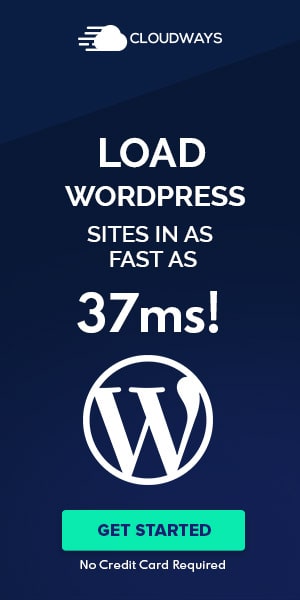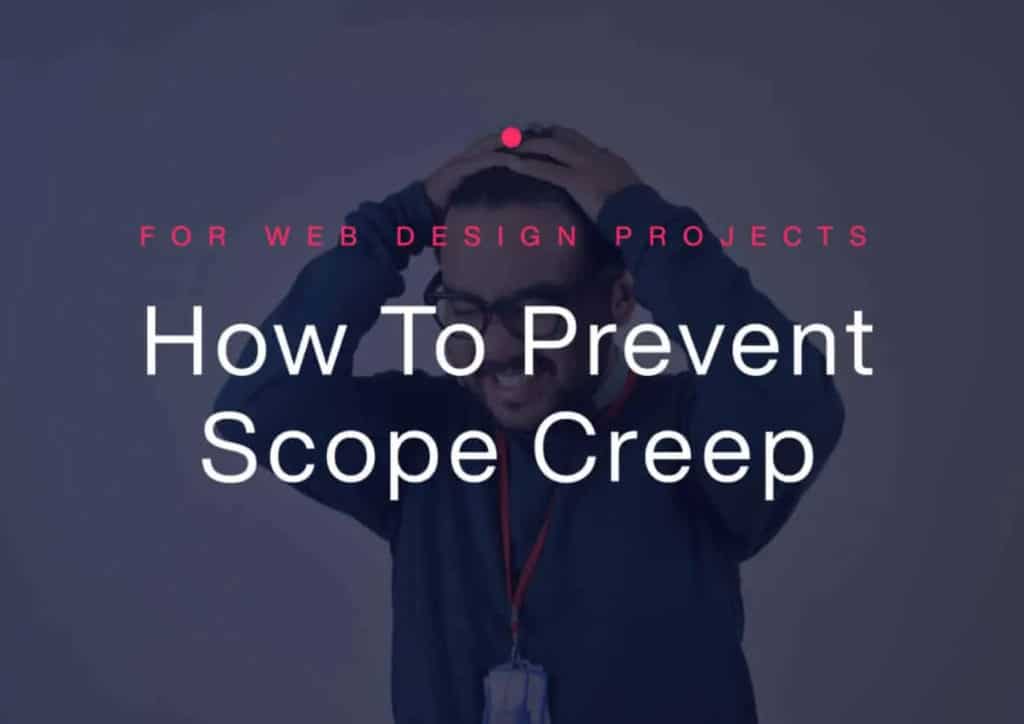5 Ways To Find More Web Design Clients
When starting a web design business as a freelancer, most likely, all leads will come from referrals, networking, friends, and family. After all, if you are new, then marketing hasn’t come into play yet. And you can do great off referrals. I actually went from a freelancer to owning an agency with just referrals and networking.
But sooner or later, the referral stream dries up, and the leads become far in between. It is usually in this time where a freelancer enters the feast and famine stage. And that is not a place we want to be in.
How do other freelancers get to the point where they are getting so many clients and work that they can start to pick and choose the projects they want? Well, first, you need a steady stream of new project leads. In this article, we will look at five areas where you can build a stream of leads that get you to a level where you can choose the work you want, and turn down the work you don’t want.
How Do Clients Find You?
One of the most common challenges I hear from freelancers is finding clients. Myself included. I used to ask, “How do I find clients?” Then I heard from someone, the Futur’s Ben Burns, that was the wrong question to ask. What I should be asking myself is, “How do clients find me?”
This led me on a path of marketing plans and content creation. I won’t lie to you, this isn’t about getting overnight results. This is about building a funnel. With hard work, perseverance, and focused dedication, in time, you will get to the point where you are getting so many leads, you can choose the ones you want and turn down the projects you don’t feel are a good fit for you.
It might be hard to see this, especially if you are in the feast and famine stages where you need to scrape up every possible project. And I am only speaking from experience. If you are freelancing or starting an agency, you most like my have been there. The worry about making it through the month. And then that fear leads to looking for quick solutions. Like email marketing (AKA spamming), Linkedin spamming and cutting rates due to desperation.
You have a choice. Either chase clients down. Or, you can start putting in the work that positions you in front of clients and lets them come to you.
Here are five areas to dedicate your time to be discoverable by clients looking for web designers. With these, you can build your marketing plan, and if you stay consistent and focused on them, in 3-6 months, you will start to see the leads come in. Let me tell you, it’s a good feeling when you start receiving notifications from potential clients asking you about building their websites.
1. Social Media
I feel right now, Facebook and Linkedin have the most opportunity. Twitter is useful to have, and I am actually placing Instagram in another category for this article (more of that later). For social media, let’s look at Facebook and Linkedin.
For Facebook, start with your personal profile. You should want everyone to know, your family, friends, and random visitors, that you are a web designer, and this is what you do. Become the go-to website person for the people that know you.
Next, start a Facebook page for your freelance business or agency. Take time to set this up. Make it look professional, so when someone visits, they see that you are serious about what you do. It’s essential too that you keep working on your business page. You should have a post at least once a week. It really isn’t that difficult to do. You can showcase the sites you built, share articles related to web design that found helpful, and share designs. There are free versions of posting tools like Buffer, where you can set up 1-2 months of posts and automated them so one post a week goes out.
I look at Facebook business pages as a tool to use when prospecting clients are researching who they are going to hire.
Finally, one of the biggest opportunities at the moment with Facebook, groups related to your field (web design). Find a couple active groups you like and get involved. Start helping others and answering questions. Be known in those groups. Now, you can’t join fifty groups and be active in all. You can try, but no one will know who you are. But if you dedicate yourself to 2 – 3 groups and are active there daily, people are going to know you. And you know who else is in those groups? Clients!
Linkedin is a great place to be right now, looking for clients. But so many are doing it wrong. So what’s the wrong way to market on Linkedin? Spamming! Going on Linkedin just to find clients is not the way to do it. I get dozens of web designers and developers with the same copy and paste message wanting work every week. I don’t even read them. I don’t have time to.
But I do get some that reach out just for discussion. Or just saying they liked my posts and can relate. These are the people I talk to on Linkedin, the ones I am building a relationship with. I am not going to spend any time talking with someone that sends me a copy and paste message. In fact, I find it annoying because I have to keep deleting messages.
It should be genuine by posting and engaging. Remember, the goal isn’t to find a new client this week. It’s to build relationships. A good practice is to spend 30 to 60 minutes a day on Linkedin. Write posts, comment on other’s posts, and send messages to people saying things simply like “Hey, I liked your post, and I look forward to seeing more of your content.” You will start to build relationships and find more clients by networking.
2. Portfolio platforms – Dribbble, Behance, Instagram
Even though Instagram is technically one of the largest social media platforms, it can be used by web designers to showcase their work. This is a powerful platform to be on for a designer, and I know many that solely use IG as a funnel to growing their business.
There are a couple things you can do here. You can show your work as a portfolio. And you can use Instagram to create Content by using carousels. Carousels are the thing to do right now. Instagram loves them, and it shows in their algorithm. Not only can you showcase your design skills here, but you can do it in a creative way that also produces useful Content that helps others. This also positions you as more of an expert.
Dribbble
On Dribbble, you can showcase your design style by posting designs of many ranges. Web banners, landing pages, logos, etc. Not only is this an excellent place to find inspiration for your designs, but you can actually find work here! When I am looking to hire a designer, this is where I like to go. I won’t hire designers from Upwork or Fiverr because I can’t see their design styles. But on Dribbble, I can look for a specific style that we may need for a project and talk to designers that fit the style I am looking for.
Behance
Behance is the place to showcase your portfolio. It’s different from Dribbble in the way that Dribbble, you would just show your design. And in Behance, you showcase your projects and case studies. This allows you to show more than just the design. You can give others a look into your thinking and strategy, showing what you did to make the project work. For Behance, you don’t need to post dozens of projects. Instead, take your time when building a Behance portfolio piece. You want to show step-by-step your process, what the goals were, what challenges the client faced, and how you solved those challenges. And keep your best three projects at the top.
3. Website SEO
As a web designer, one of the hardest websites for me to build was my own! Can you relate? It was like no matter what I did, it was not good enough. Plus, I kept having new ideas. And then I would get so busy on client work, I wouldn’t even touch my own site for months at a time.
What this resulted in was inconstant brand and messaging on our site and neglect.
One thing about being a web designer, we get better with time and experience. Whatever level of designs you are creating today, a year from now, it will be improved tenfold. And because of this, we should be updating and even redesigning our websites regularly. Your website will most likely be the first site a potential client sees in your portfolio. And what do you think it says for a web designer that has an old, outdated website?
Even with the constant evolution of your personal site’s design and brand, the thing that should be considered first is your SEO. Build this early and have your SEO strategy included with each redesign you make. If you don’t know SEO, then defiantly invest and hire someone that does. Start with an SEO audit and then at least having your site correctly optimized. It’s also good to do some learning on how to maintain SEO for your website. With this knowledge, you will be able to help your clients better as well.
4. Google My Business (GMB)
While SEO takes a bit of time getting you found in searches, Google My Business can get you found quite faster. Have you ever Googled “coffee shop near me” and get a list of places with their ratings, reviews, and locations? That’s the power of GMB.
If you are running a business, whether it’s as a freelancer or agency, having Google My Business is a must. First, start collecting reviews right away. These will build up with time. One of my mistakes when I was new, I asked clients to send me reviews by email so I can use them on my site. Those were all opportunities to build my reviews on Google.
Set up your GMB account right, take time, and learn it. Make sure you stay honest and genuine. No fake reviews and fake addresses. Dishonesty will always come back to bite you in the end. And keep nurturing your GMB by checking in, adding posts, and improving your business listing. The more attention you put into it, the more love Google will show you.
5. Creating Content
I’m a web designer that founded a successful agency, but here I am writing a blog post. I will also be making a YouTube video on this topic and creating micro-content based off this post for our social media. Now, I am not a writer nor was ever good at writing. I am a designer and agency owner. I write content like this because I want to share what I have learned. And that is all that I’m doing. Sharing my experience and what I have learned with hopes that it can help others.
By creating content, not only am I giving back and doing something positive by focusing on helping others, but this also helps our business. Blog posts boost SEO, and the most visited pages on our site are blog posts. Sharing content on social media allows me to engage with others and build connections. And it makes me discoverable.
We are all in the process of learning. What you know now compared to what you will know in a year from now will have such a drastic difference. You can either keep all that knowledge and experience you gained to yourself or give it back freely.
Being Discoverable
The goal here is to put yourself out in front of clients. When you are freelancing, you are running a business. You will need to do more than just design and build websites to build a successful business. For any business, marketing is an absolute must.
Most of us start off with referrals and recommendations and can even do well with those. But what happens when the referrals dry up? This is usually when we start looking into a marketing plan. You don’t have to wait until your back is against the wall, and you are worried about making it through the month to focus on marketing. You can start now.



